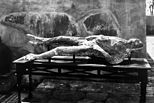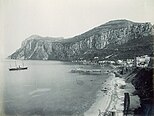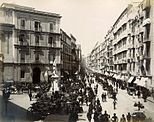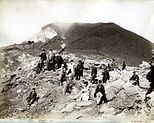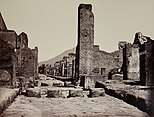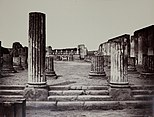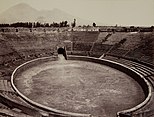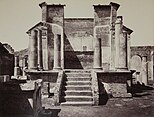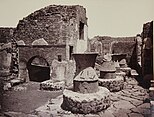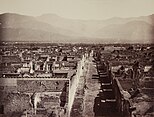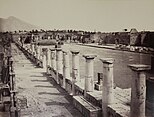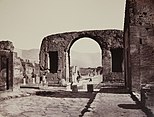Giorgio Sommer
Giorgio Sommer | |
|---|---|
Frankfurt am Main, German Confederation | |
| Died | 7 August 1914 (aged 79) |
| Occupation | Photographer |
Giorgio Sommer (1834–1914) was one of Europe’s most important and prolific photographers of the 19th century.[1] Active from 1857 to 1888, he produced thousands of images of archeological ruins, landscapes, art objects and portraits.
He was born in
He held studios in Naples at:
- Strada di Chiaia 168
- Via Monte di Dio 4 and 8
- Piazza della Vittoria
Sommer's catalog included images from the
Sommer and Behles exhibited extensively and earned numerous honors and prizes for their work (London 1862, Paris 1867, Vienna 1873, Nuremberg 1885). At one time, Sommer was appointed official photographer to King Victor Emmanuel II of Italy.
Sommer was involved in every aspect of the photography business. He published his own images that he sold in his studios and to customers across Europe. In later years, he photographed custom images for book illustrations, as well as printing his own albums and
The partnership with Behles ended in 1874, after which each photographer continued his own business. In Naples, Sommer opened a total of four additional studios: at No. 4 and No. 8 Monte di Dio, No. 5 Magazzino S. Caterina, and a last at Piazza della Vittoria.
Sommer died in Naples in 1914.
References
- ISSN 0308-7298.
- ^ Barker, Craig. "Black and white Pompeii". Teaching History. 49 (3): 10–14.
Gallery
- Selected works
-
Pompeii: Human Casts found on 5 February 1863, Städel
-
Marina Grande, Capri, ca. 1880
-
Naples, 1880s
-
Crater of the Vesuvius, 26 April 1883 (Catalogue # 8935)
-
Spaghetti eaters (Naples), before 1886
-
Stabbia Street (Pompeii), c. 1870
-
Doimede's house (Pompeii), c. 1870
-
Basilica (Pompeii), c. 1870
-
Amphitheatre (Pompeii), c. 1870
-
The Temple of Venus (Pompeii), c. 1870
-
The Temple of Isis (Pompeii), c. 1870
-
The remains of Numerius Popidius Priscus' bakery (Pompeii), c. 1870
-
Street of tombs (Pompeii), c. 1840
-
Panorama of Pompeii with Mount Vesuvius in the background (Pompeii), c. 1870
-
Panorama Forum Rivile (Pompeii), c. 1870
-
Forum (Pompeii), c. 1870
-
The Temple of Neptune, c. 1854
External links
 Media related to Catalogue of Giorgio Sommer's pictures at Wikimedia Commons
Media related to Catalogue of Giorgio Sommer's pictures at Wikimedia Commons- Biography Archived 2007-08-17 at the Wayback Machine (in German)
- Images at Harvard University Art Museums
- Artnet
- Images of Pompeii in 1870
- Images of Fine Arts Museum of San Francisco[permanent dead link]
- How a photo becomes a drawing. Giorgio Sommer’s early photograph of Valletta’s Grand Harbour was published across Europe, Times of Malta, 13 September 2023

